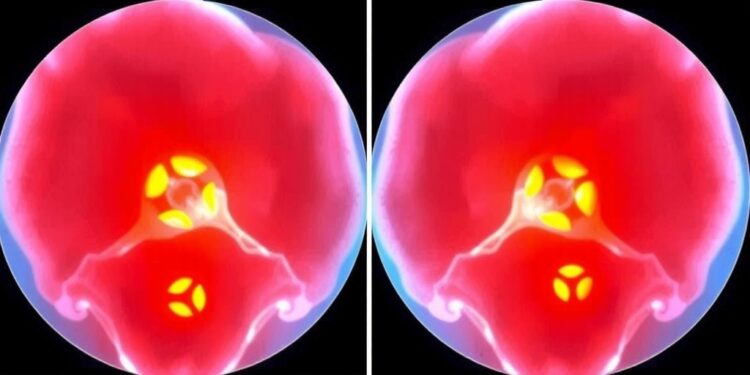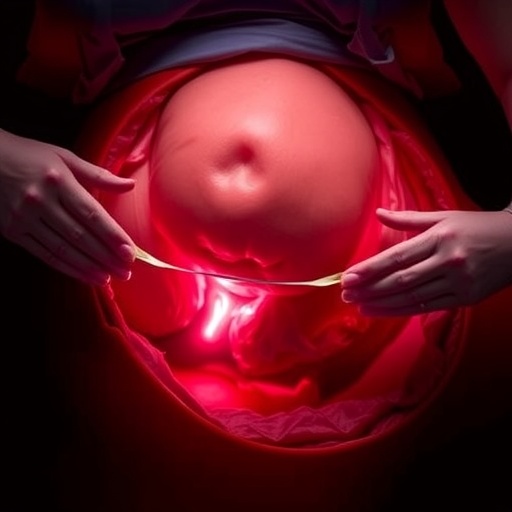
In a groundbreaking study published in the Journal of Bone and Mineral Research, a dedicated team from the Keck School of Medicine of USC has unveiled compelling connections between inflammation-related proteins and pathways with variations in bone mineral density (BMD) over time. This initiative marks a pivotal moment in the intersection of immunology and bone health, indicating the potential to identify biomarkers that may predict an individual’s risk for developing bone-related health problems as they age.
Bone mineral density, a critical measure of bone strength, is determined by the mineral content within bone tissue. As individuals progress through life, BMD reaches its zenith in young adulthood, after which a gradual decline begins. This decline is crucial to monitor, as bone mineral density is a key predictive factor for numerous conditions such as osteoporosis, which afflicts millions, particularly within the aging population.
Emily Beglarian, the lead author and a doctoral candidate in epidemiology at the Department of Population and Public Health Sciences at USC, emphasizes the significant role proteins play in bone formation and maintenance. She notes a growing body of research aimed at isolating specific proteins linked to bone health, a pursuit that adds a critical dimension to understanding how the immune and inflammatory responses can influence the integrity of our skeletal systems.
The study in question tracked the health of 304 overweight and obese Latino adolescents, ages 8 to 13, over an average span of three years. These individuals were part of the larger Study of Latino Adolescents at Risk for Type 2 Diabetes project. Throughout this period, the researchers investigated the interplay of over 650 proteins linked to BMD, forming one of the first longitudinal studies to explore these associations over extended follow-up periods.
Utilizing advanced software, the research team mapped the proteins that correlated with bone mineral density to specific pathways in the human body. Their findings revealed a significant occurrence of proteins associated with BMD that were primarily involved in inflammatory and immune pathways, especially relevant in the adolescent demographic. Intriguingly, previous research has similarly identified these pathways as influential in older populations, underscoring a potential continuity in the biological mechanisms governing bone health across different life stages.
Chronic inflammation has been established as a disruptive force in normal bone metabolism, leading to lower BMD and an increased risk of related conditions. This relationship highlights the urgent need for preventive strategies targeted at the early stages of life, where ensuring optimal bone health can yield lifelong benefits.
The findings of this research hold particular significance, given the current context wherein millions of adults in the United States live with diseases characterized by low bone mass. The rising prevalence of osteoporosis, exacerbated by an aging population, accentuates the importance of investigating bone health during childhood—a formative period that can significantly influence an individual’s peak bone density and overall bone health.
Historically, research has primarily concentrated on very specific cohorts, often limited to small sample sizes and predominately involving either East Asian or non-Hispanic white populations. Additionally, much of the existing literature has predominantly focused on older adults, especially women, due to the higher prevalence of osteoporosis in females, which is approximately four times that in males. This study represents a shift towards inclusivity in research, as it examines the associations between proteins and BMD within younger, ethnically diverse populations.
The implications of Beglarian’s findings are further enriched by a complementary analysis that scrutinizes the associations between BMD and a narrower subset of protein markers within a different cohort of young adults. This analysis revealed that several proteins consistently exhibited correlations with lower BMD, reinforcing the premise that low bone mineral density is a significant risk factor for the subsequent development of osteopenia and osteoporosis in adulthood.
The potential to leverage these findings towards the development of actionable biomarkers for bone health represents a remarkable advancement. Identifying individuals at an increased risk for bone-related conditions could catalyze earlier interventions and preventative measures aimed at improving lifelong bone health. It is crucial to alter the trajectory of BMD decline, emphasizing the need to promote healthy habits and medical interventions at an early stage.
Beglarian’s research underscores the complexities of bone health and the necessity of addressing factors that can diminish BMD early in life. The contrasts observed in this study compared to existing research—where BMD is typically assessed at later life stages when conditions have already deteriorated—highlight the value of an early intervention perspective. This proactive approach aims not just to halt the decline of bone health but to empower individuals to achieve their highest potential peak density, setting them up for a healthier trajectory for the rest of their lives.
Overall, this research signifies an important step forward in our understanding of the interconnected nature of inflammation, bone health, and the underlying biological processes. Given the complex nature of these associations, further exploration is required, but the groundwork laid by this study offers hope for identifying early warning signs and implementing prevention strategies that could combat the increasing incidence of osteoporosis and related conditions.
The collaboration involved experts from various prestigious institutions, reflecting a shared commitment to advancing the understanding of bone health. This study not only broadens the scientific community’s knowledge but is poised to pave the way for future research initiatives aimed at enhancing our comprehension of bone mineral density determinants.
As the researchers garner attention for their important work, the implications of their findings extend beyond academia, potentially influencing public health policies and preventive strategies aimed at ameliorating bone health outcomes in at-risk populations.
Subject of Research: Association of inflammatory proteins and pathways with bone mineral density in Latino adolescents
Article Title: Proteins and pathways involved in inflammation are longitudinally associated with total body bone mineral density among primarily Hispanic overweight/obese adolescents and young adults
News Publication Date: 14-Jan-2025
Web References: https://academic.oup.com/jbmr/advance-article/doi/10.1093/jbmr/zjaf002/7954097?login=false
References: Not Provided
Image Credits: Not Applicable
Keywords: Bone mineral density, inflammation, obesity, adolescents, osteoporosis, biomarkers, public health, skeletal health, proteins, immune pathways, longitudinal study, preventive health.
Tags: aging and bone strengthbiomarkers for bone healthbone health research advancementsbone mineral density changesepidemiology of bone diseasesimmunology and bone health connectioninflammation proteins and bone densityJournal of Bone and Mineral Researchosteoporosis risk factorspopulation health and agingprotein role in bone maintenanceUSC Keck School of Medicine research





